Binance remains the global leader in volume and variety of crypto products. To understand how a regional platform compares to this standard, we tested Lemon, an Argentine exchange that has been gaining popularity in Argentina and some Latin American countries with its proposal for simplicity in reais, pesos, and dollars.
We deposited the same amount on both platforms, made deposits, purchased assets, staked, and requested support. Below, you can see how Binance performs at each step and where Lemon approaches, diverges, or still needs to evolve.
Home screen and main navigation: Binance vs Lemon
Binance opens with a fully customizable dashboard (widgets, Binance Square news, shortcuts to Earn, OTC, etc.). The fixed menu at the bottom (Home, Markets, Trade, Discover, Wallet) makes it easier for those who switch sections all the time.
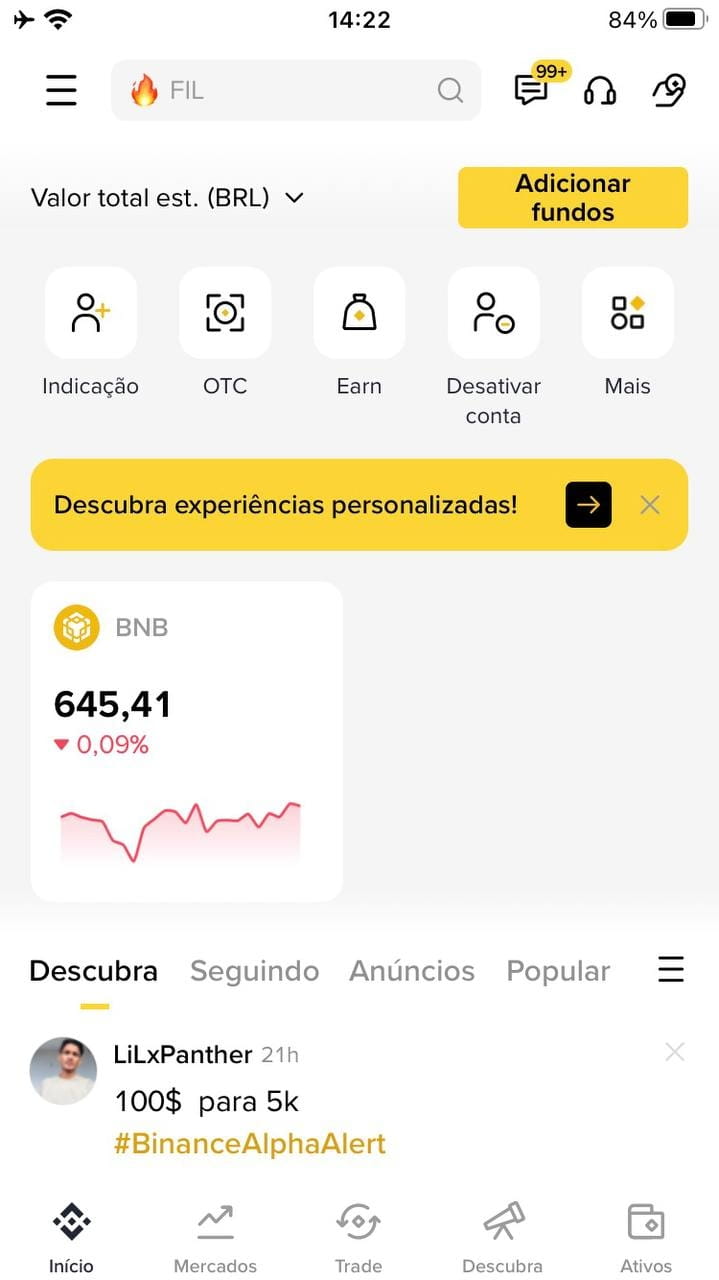
Lemon bets on minimalism: the home screen shows balances in fiat and crypto, along with Deposit and Send buttons. There is a compact FAQ, but there are no widgets or market feed.
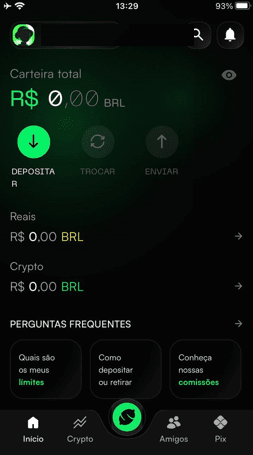
Summary: Binance delivers advanced customization and direct connection to the market; Lemon prioritizes a clean screen and quick transactions.
Deposits in BRL or crypto: Binance vs Lemon
On Binance, Pix arrives in seconds and with no fees; those who prefer can also use card and P2P or deposit cryptos. We opted for Pix as it is the fastest solution with no fees.

At Lemon, Pix encountered errors both for CPF key and random key, preventing deposits in reais and forcing us to resort to a workaround.


Thus, it was necessary to send XRP from Binance to Lemon and then convert it to BRL within the app. This extra step compromises usability and may frustrate those who do not have crypto on hand to transfer.
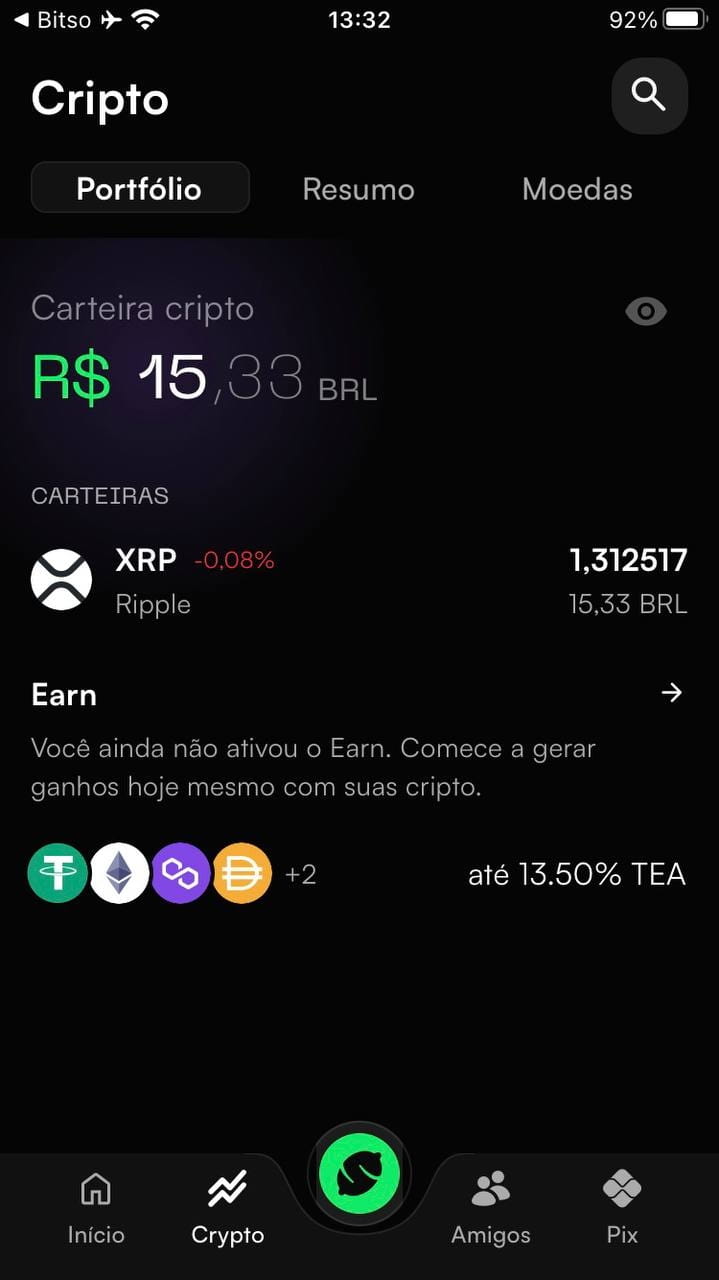
Summary: Binance wins with a variety of methods and stability of Pix. However, Lemon had a bug that made deposits via Pix impossible, requiring users to already have crypto to use the platform.
Looking at the Crypto Market: Binance vs Lemon
On Binance, market visualization is complete: in addition to interactive charts in different timeframes, users have access to technical indicators, analysis tools, real-time order book, trading volume, and various pair options. It is a structure designed for those who want to follow the market in depth, whether for analysis or quick trade execution.
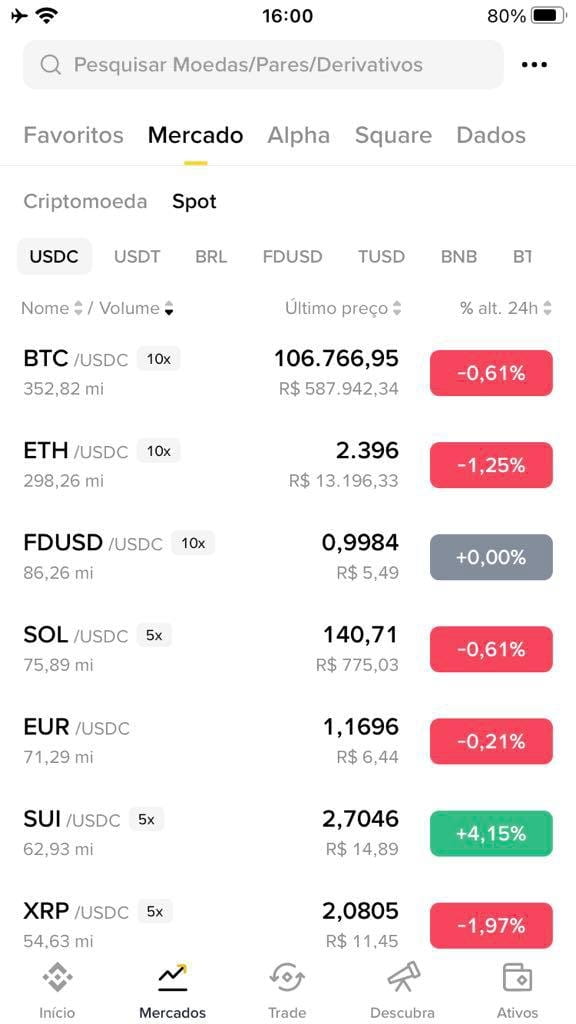
At Lemon, the query is limited to a simple chart per asset, with basic price visualization in windows like 1 day, 1 month, or 1 year. There is no visible order book or technical indicators. The app only shows the asset's variation over the period, which may be sufficient for tracking general fluctuations, but does not cater to those who wish to trade with more precision.
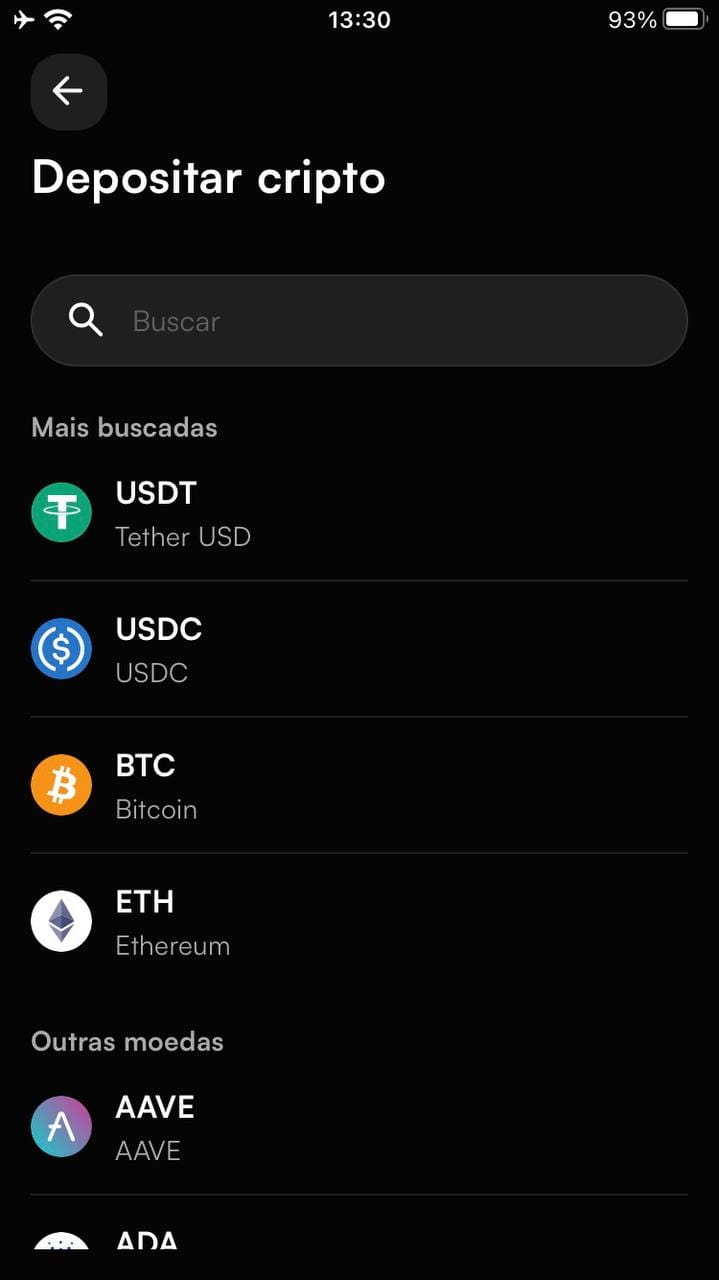
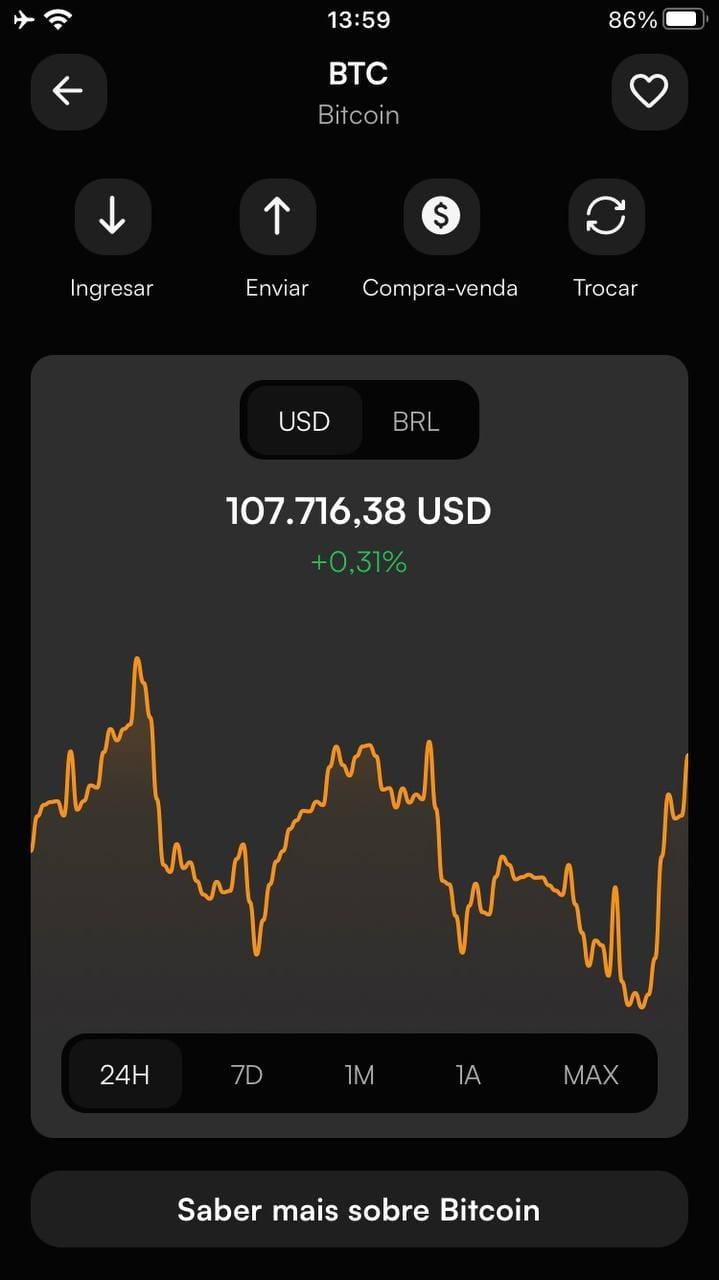
Summary: Binance delivers a robust and professional consultation experience. Lemon, on the other hand, only meets the basics, with limited information about market behavior.
Buying cryptocurrencies: Binance vs Lemon
To compare the conversion conditions between the exchanges, we made a purchase of approximately R$ 15.28 in Cardano (ADA) on both platforms.
On Binance, we used the instant conversion feature, with an exchange rate of 1 BRL = 0.322088 ADA. The total amount converted was 4.92150635 ADA, with zero fees, ensuring transparency and maximum utilization of the invested amount.
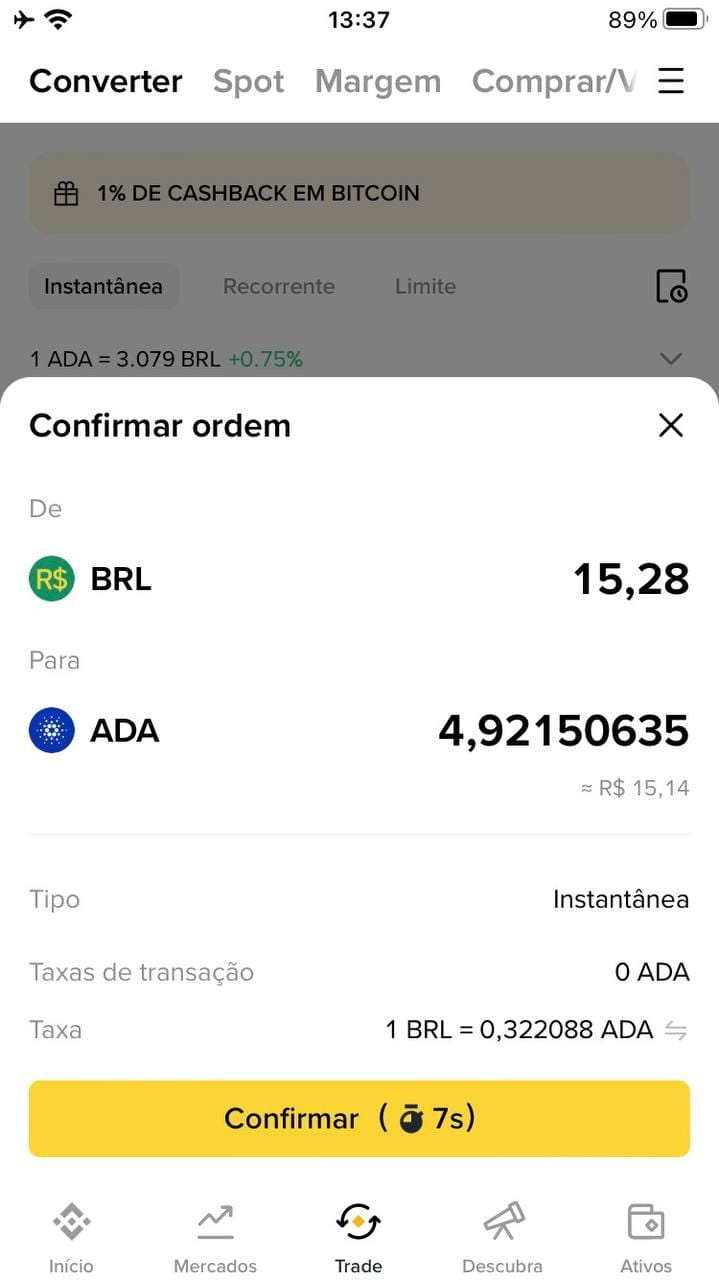
At Lemon, although the process is also simple, the exchange rate was less favorable: 1 ADA = 3.3251574 BRL. With a 1% fee (equivalent to R$ 0.15), the net amount received was only 4.549319 ADA—about 7.5% less than Binance for the same amount.
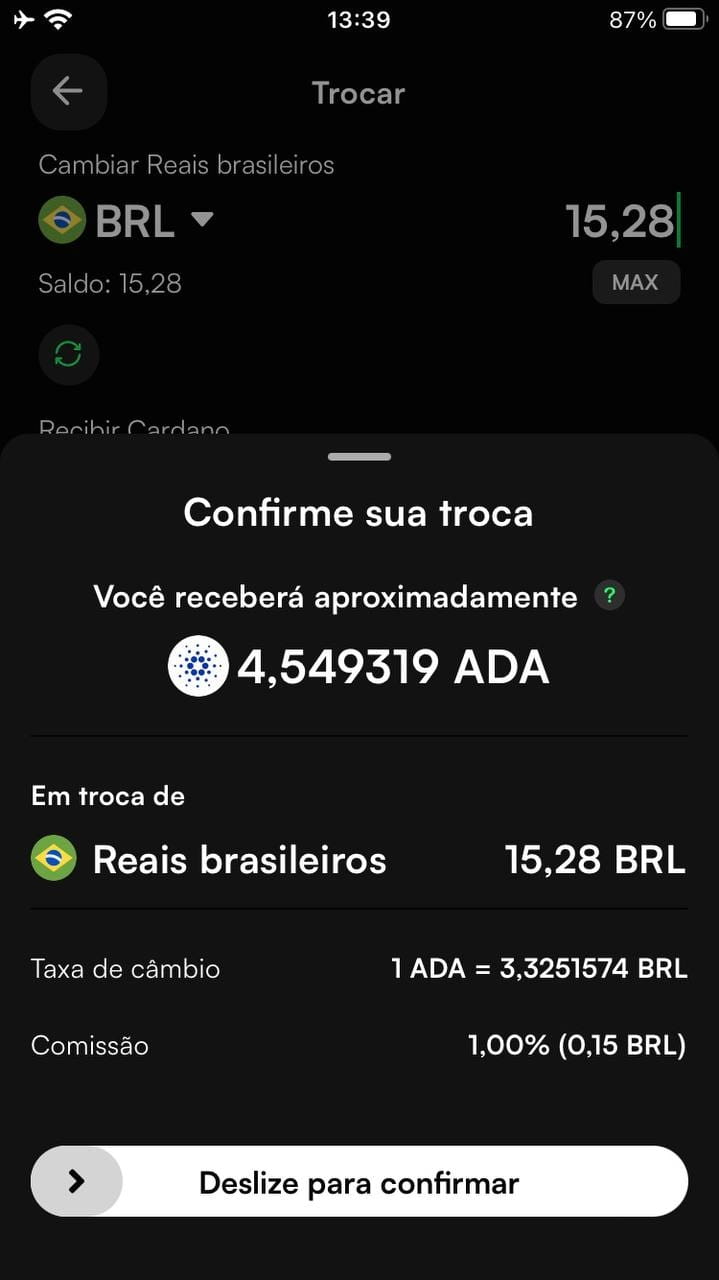
Summary: Binance delivered more ADA for the same amount of reais, thanks to a better exchange rate and no fees. Lemon applied a higher spread and charged a commission, which significantly reduced the outcome of the operation. For those seeking efficiency in conversion, Binance's advantage was clear.
Passive income & Earn: Binance vs Lemon
On Binance, the 'Earn' section is a true ecosystem. With dozens of tokens available, users can choose from flexible, locked, traditional staking products, Launchpool, liquidity pools, and even opportunities with promotional APR. It is possible to filter by cryptocurrency, see estimated return rates, choose between low or high risk, and track accumulated earnings in real-time—all with just a few taps in the app's interface.
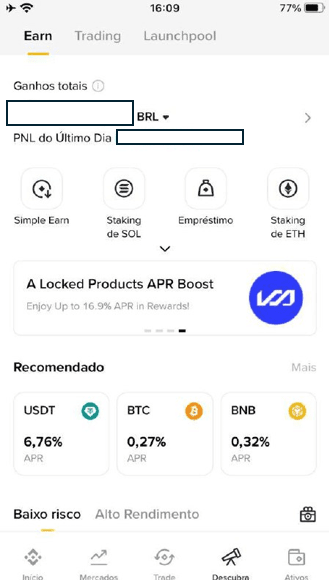
At Lemon, the experience is much leaner. Accessing the 'Lemon Earn' tab, we found only six token options for passive income, including DAI, POL, ETH, and USDT. Rates vary between 1.4% and 14% per year, and there is no differentiation between types of staking or flexible/locked redemptions. Additionally, the layout is more limited: the app only shows the accrued earnings for the month, without broader history or future projections.
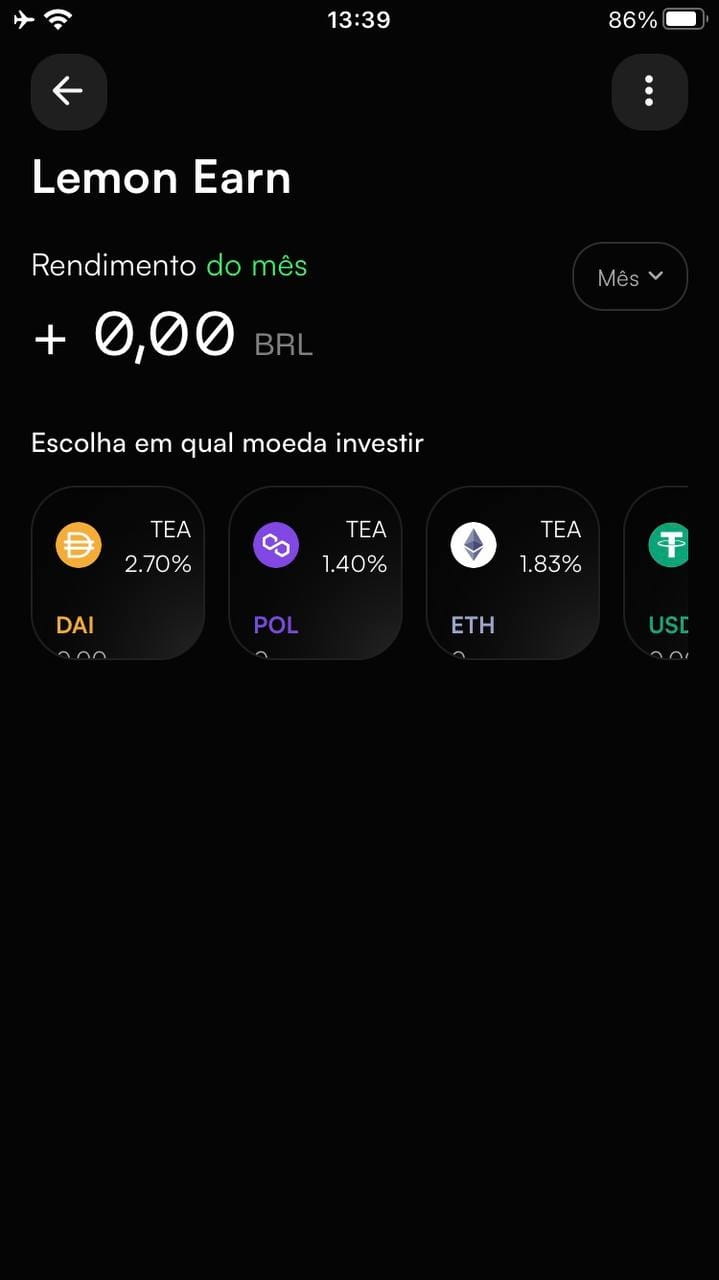
Summary: Binance excels due to the robustness of its passive income system—with great variety, different formats, and potentially more attractive rates. Lemon offers a functional solution, but limited in scope and appeal for those looking to generate income with crypto assets.
Customer support: Binance vs Lemon
On Binance, support is accessed through a fixed button on the home screen. The virtual assistant (screenshot next to it) offers open searches, useful shortcuts—such as 'recent orders' or 'uncredited deposit'—and responds in Portuguese. If the automation doesn't resolve the issue, just ask, and the system will forward you to a human agent 24/7 within the chat, without leaving the app.


At Lemon, the Help button also opens a chat-bot (prints above), but the flow is limited: it first suggests FAQ articles and only then allows sending a message. We reported the error of including a Pix key and waited over 3 hours without a response from an attendant. During this period, there were no queue notifications or estimated wait times, which harms the experience in urgent matters.


Summary: Binance stands out for its integrated and real-time support, with quick escalation to a human assistant. Lemon maintains a functional chat-bot, but the delay of over an hour for human responses shows that it still needs to improve response time and transparency regarding the status of requests.
What Binance offers more
+500 cryptocurrencies listed with high liquidity and varied pairs.
Reliable Pix, card, and P2P with no fees for funding.
Fee-free conversion and lower spreads: more crypto for each real invested.
Complete Earn ecosystem (Simple Earn, Launchpool, liquidity pools, ETH 2.0 staking).
Advanced trading tools: stop-loss, OCO, iceberg orders, real-time order book.
Customizable dashboard with widgets and news from Binance Square.
Integrated 24/7 support: smart bot + human agent in Portuguese.
What are Lemon's strengths?
Minimalist interface: balance and Deposit/Send buttons visible immediately.
Simple flow for conversion between crypto and BRL/pesos—ideal for beginners.
Streamlined portfolio (< 50 assets) covering major coins (BTC, ETH, ADA, SOL, stablecoins).
Lemon Earn with one-click enrollment and stable returns (1.4%–14% a.a.).
Bilingual experience (PT/ES) and strong presence in Argentina, facilitating regional use.
Fast crypto deposits: a good entry point if you already have assets in another exchange.
Binance vs Lemon: which exchange makes more sense for you?
Binance remains the most robust choice for those seeking asset diversity, lower fees, and a complete ecosystem of products—from spot trading to staking, along with professional tools and 24/7 support. Those looking to grow in the crypto universe or trade more deeply will find everything they need on the global platform.
Lemon shines for its simplicity and focus on the basics. The lean interface, direct conversion between crypto and fiat, and easy-to-use Lemon Earn form an attractive package for those taking their first steps, especially in the Argentine context.
See side by side how they compare:
Asset Quantity
Binance: More than 500 crypto assets
Lemon: Fewer than 50 coins available
Deposits in BRL
Binance: Instant and stable Pix; card and P2P also available
Lemon: Pix had an error; necessary to send crypto
Crypto Conversion
Binance: Competitive spread with no fee - MORE ADVANTAGEOUS!
Lemon: High spread and 1% fee
Market Query
Binance: Advanced charts, indicators, and order book
Lemon: Simple chart, no book or indicators
Passive income (earn)
Binance: Various formats (Earn, Launchpool, ETH staking, etc.)
Lemon: Lemon Earn with 6 coins and modest fees
Navigation
Binance: Customizable dashboard with widgets and quick access to features
Lemon: Minimalist and straightforward interface
Customer support
Binance: Bot + human assistant 24/7 in the app
Lemon: Delayed chat-bot with no estimated response time
Payment using crypto
Binance: Available to Brazilian users, through Binance Pay
Lemon: Lemon Card not yet available in Brazil
But there are two points of attention:
Lemon Card (cashback in BTC)—widely publicized since 2022—is still not available in Brazil, limiting an important differential.
In November 2023, Lemon itself announced it would slow its expansion in the Brazilian market to prioritize other regions. This may delay the launch of new local products and the evolution of support.
In summary:
Choose Binance if you are looking for depth, variety, and a constantly evolving ecosystem.
Opt for Lemon if you value extreme practicality and just want to buy, sell, and store some coins without complexity—aware that more advanced features (and even the card) may not arrive in Brazil anytime soon.
Evaluate your investor profile, the frequency with which you intend to trade, and the need (or not) for advanced features to decide which platform will maximize your results in 2025.